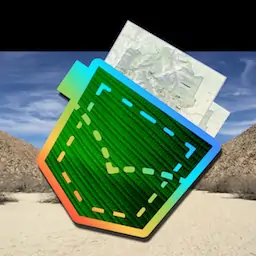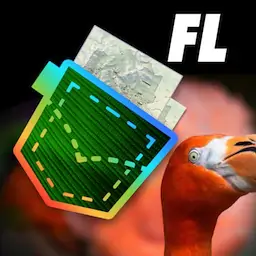"Sunset over the preserve, Big Cypress National Preserve, 2015." by U.S. National Park Service , public domain
AmphibiansBig Cypress |
featured in
| National Parks Pocket Maps |  | |
| Florida Pocket Maps |  |
National Park Service
U.S. Department of the Interior
Big Cypress National Preserve
Florida
• Never feed wildlife.
• View wildlife with respect.
• All wildlife is wild and unpredictable.
Stay a safe distance from any wild animal
—15 feet is recommended.
• All plants and animals within National
Park Service areas are protected, and it
is illegal to collect any wildlife without
special permits.
Cover photo: southern toad, NPS/JAN SHIREY
N ati o n a
l
ese
r ve
EXPERIENCE YOUR AMERICA!
se
e
Do Not Feed or
Harass Wildlife
ss
Pr
The tympanum of this Southern leopard frog is
identified here. The Southern leopard frog can
be distinguished because it has a yellow spot in
the center of its tympanum.
re
Pr
How You Behave
Can Save
oy
Tympanum
While visiting Big Cypress National
Preserve, or any other natural area,
remember:
nj
Drums in the Night
Start a walk in the swamp at dusk and imagine
listening to a symphony orchestra commence a soft
prelude with the timpani drums beating with every
step. As the sunlight dims, the music crescendos
transitioning into the swamp’s own symphony of
croaking. Seemingly on cue, males searching for a
mate call out for females, veiled from predators in
the darkness. Females hear the male serenades with
their tympanum, the frog or toad’s outer ear located
behind the eye. Amphibians use this tympanum, an
ancient word in Greek meaning drum, because it
resembles a piece of cloth stretched over a drum.
Big Cypress
Amphibians
The thrill of watching a wild animal in its
natural surroundings is spectacular and
awe-inspiring, but please remember, you
are the guest and they are at home.
p
Amphibians are animals that live a portion of their
life in water. Some, like sirens, live their entire life in
water. While the word “moist” may carry a negative
connotation to some humans, most frogs and toads
rely on keeping their skin moist to survive.
Watching wildlife the
responsible way...
Big Cy
Amphibians of the Swamp...
rv
e—
t—
P r o tec
E
Scientific Name
Narrow-mouthed Toads
___Eastern narrow-mouthed toad
Gastrophryne carolinensis
Toads
___Giant, marine, or cane toad*
___Oak toad
___Southern toad
Bufo marinus
Bufo quercicus
Bufo terrestris
Treefrogs & Chorus Frogs
___Barking treefrog
___Cuban treefrog*
___Florida cricket frog
___Green treefrog
___Greenhouse frog
___Little grass frog
___Southern chorus frog
___Squirrel treefrog
Hyla gratiosa
Osteopilus septentrionalis
Acris gryllus dorsalis
Hyla cinerea
Eleutherodactylus planirostris
Pseudacris ocularis
Pseudacris nigrita
Hyla squirella
Top to bottom: Eastern narrowmouthed toad; Southern leopard
frog, one of the larger frogs of the
swamp–only the pig frog is larger;
barking treefrog.
NPS/TODD PIERSON
Amphibians tend to be highly
sensitive to environmental changes,
for that reason scientists often use
them to determine the overall health
of an area.
True Frogs
___Pig frog
___Southern leopard frog
Rana grylio
Rana sphenocephala
Aquatic Salamanders
___Everglades dwarf siren
___Greater siren
___Two-toed amphiuma
Pseudobranchus axanthus belli
Siren lacertina
Amphiuma means
Newts
___Peninsula newt
Notophthalmus viridescens piaropicola
* = invasive species
Left: Cuban treefrog, an introduced species that has spread rapidly
in Florida. These frogs disrupt the ecosystem because they eat
smaller native tree frogs. The native green treefrog (right) can
change to brown coloring, thereby confusing identification.
However, the Cuban treefrog has extra large toe pads and much
wartier skin than natives. It also has a skin fold starting from the
eye towards the tympanum.
NPS/Hardin Waddle, PhD
Amphibian Checklist_FINAL.indd on HQ shareall, interp publications, 2,000 printed, 10/2011, stored at Oasis and WC


